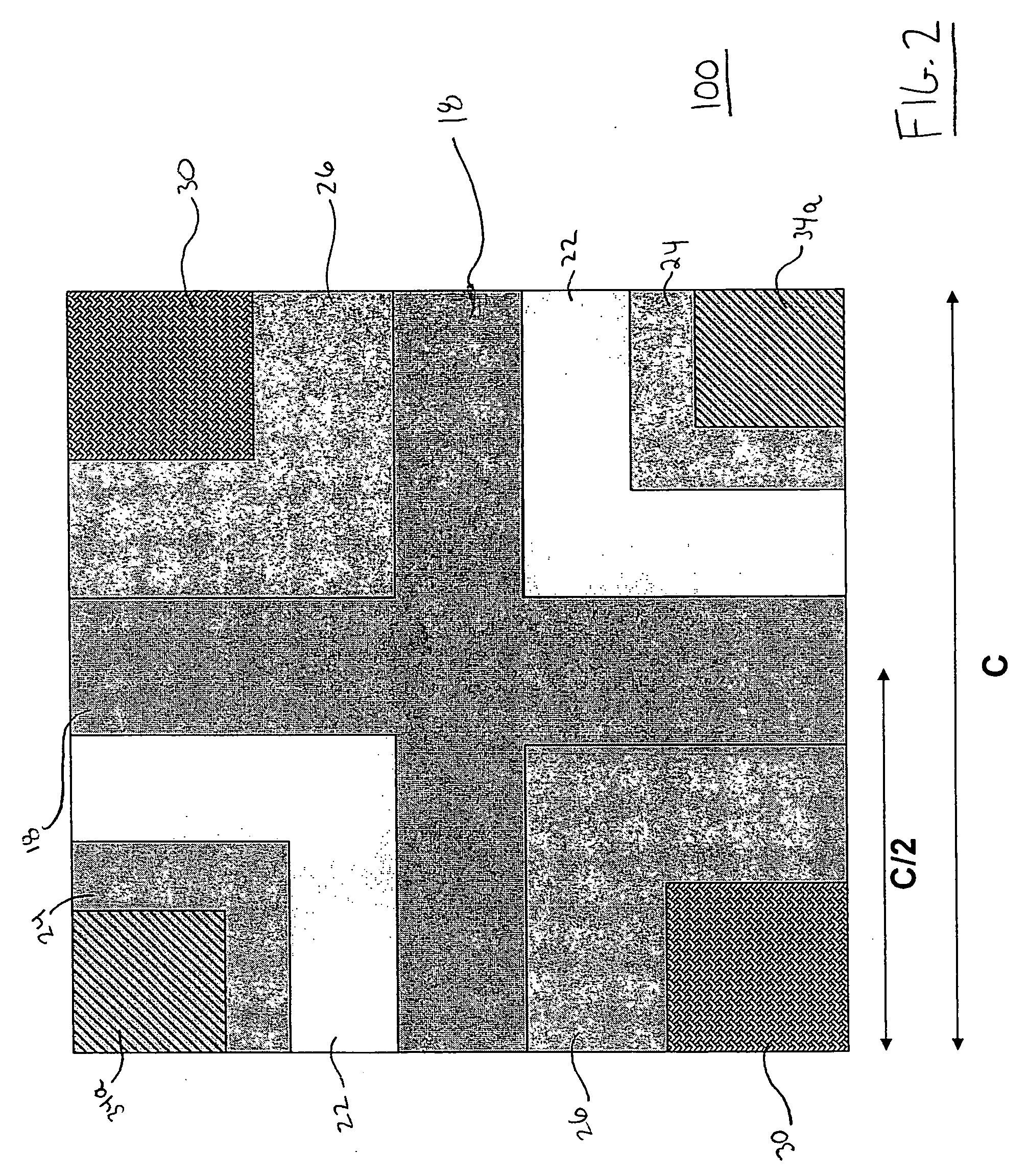Quasi-vertical LDMOS device having closed cell layout
a closed cell, quasi-vertical technology, applied in the direction of semi-conductor devices, basic electric elements, electrical equipment, etc., can solve the problems of limiting the current handling capability of the device, challenging and often times more expensive design of the mosfet, and inability to meet the needs of power management applications, etc., to achieve the effect of low-voltage power devices
- Summary
- Abstract
- Description
- Claims
- Application Information
AI Technical Summary
Benefits of technology
Problems solved by technology
Method used
Image
Examples
Embodiment Construction
[0019] As used herein, the following dopant concentrations are distinguished using the following notations:
[0020] (a) N++ or P++: dopant concentration>5×109 atoms / cm3;
[0021] (b) N+ or P+: dopant concentration of 1×1018 to 5×109 atoms / cm3;
[0022] (c) N or P: dopant concentration of 5×106 to 1×108 atoms / cm3;
[0023] (d) N− or P−: dopant concentration of 1×1015 to 5×1016 atoms / cm3;
[0024] (e) N−− or P−−: dopant concentration15 atoms / cm3.
[0025]FIG. 1 is a cross-sectional view of a p-channel LDMOS device with vertical current flow, sometimes referred to herein as a “quasi-vertical LDMOS device.” Device 10 includes a semiconductor substrate or wafer 12, typically a silicon substrate. The silicon substrate 12 is doped to a N+ dopant concentration comprising n-dopants such as phosphorous or arsenic. In an exemplary embodiment, substrate 12 has a thickness of less than 100 μm, and preferably less than about 75 μm (about 3 mils), and most preferably has a thickness equal to about 50 μm (2 m...
PUM
 Login to View More
Login to View More Abstract
Description
Claims
Application Information
 Login to View More
Login to View More - Generate Ideas
- Intellectual Property
- Life Sciences
- Materials
- Tech Scout
- Unparalleled Data Quality
- Higher Quality Content
- 60% Fewer Hallucinations
Browse by: Latest US Patents, China's latest patents, Technical Efficacy Thesaurus, Application Domain, Technology Topic, Popular Technical Reports.
© 2025 PatSnap. All rights reserved.Legal|Privacy policy|Modern Slavery Act Transparency Statement|Sitemap|About US| Contact US: help@patsnap.com



